Fat-tailed Scorpion
- March 26, 2024
- 0 comment
Androctonus, commonly known as the fat-tailed scorpion, is a fascinating genus of arachnids that holds both intrigue and caution in the minds of those who encounter them. These scorpions, found primarily in arid regions across Africa, the Middle East, and parts of Asia, boast distinctive physical features that set them apart in the animal kingdom. With their shades of brown or black coloring, Androctonus scorpions blend seamlessly into their desert habitats, where they reside in burrows or rocky crevices. One striking characteristic is their thick, bulbous tail, which not only stores reserves of fat but also harbors the venom glands responsible for their potent stings.
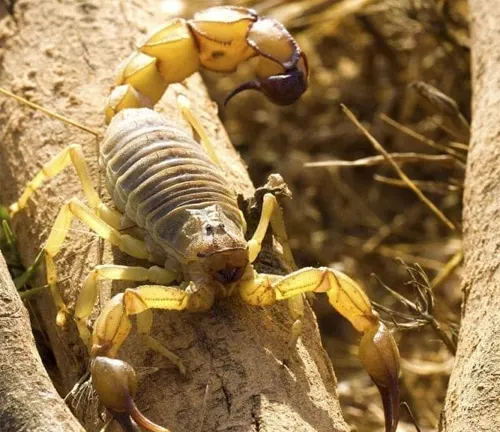
Despite their relatively small size, ranging from 3 to 10 centimeters in length, Androctonus scorpions wield a powerful weapon in the form of their venomous stinger, capable of delivering a venom cocktail that can cause severe reactions in humans. As nocturnal predators, they emerge under the cover of darkness to hunt for prey, displaying remarkable adaptations to survive in harsh desert environments. While often feared, Androctonus scorpions play crucial roles in controlling insect populations and maintaining ecological balance in their habitats. Understanding these creatures, their behaviors, and their interactions with their surroundings is vital for fostering coexistence and preserving biodiversity in arid regions.
Fat-tailed Scorpion Characteristics
| Specifications | Description |
|---|---|
| Scientific Name | Androctonus |
| Common Name | Fat-tailed scorpion |
| Family | Buthidae |
| Habitat | Arid regions, including deserts, scrublands, and rocky areas |
| Distribution | Africa, Middle East, parts of Asia |
| Size | 3 to 10 centimeters in length |
| Coloration | Shades of brown or black, aiding in camouflage within desert environments |
| Tail | Thick and bulbous, stores reserves of fat and houses venom glands |
| Venom | Potent mixture of neurotoxins and enzymes, capable of causing severe reactions in humans |
| Behavior | Nocturnal predators, emerging at night to hunt for prey |
| Prey | Small invertebrates such as insects, spiders, and other arachnids |
| Importance in Ecosystem | Helps control insect populations, maintains ecological balance in arid regions |
| Threat to Humans | Venomous sting can induce symptoms ranging from localized pain and swelling to systemic effects |
| Conservation Status | Faces threats due to habitat loss, climate change, and human encroachment; conservation efforts are crucial for their survival |
| Research Interest | Subject of scientific research for venom composition, behavior, and biomedical applications; potential for developing therapeutics and understanding ecological roles |
| Reproduction | Sexual reproduction; live birth with parental care |
Fat-tailed Scorpions
Androctonus, commonly known as the fat-tailed scorpion, is a genus of highly venomous arachnids belonging to the family Buthidae. These scorpions are predominantly found in arid regions across Africa, the Middle East, and parts of Asia. Despite their small size, Androctonus species pose significant threats due to their potent venom and potentially lethal stings.
Physical Characteristics of Androctonus
Coloration and Size
Androctonus scorpions display a range of coloration, typically featuring shades of brown or black. This coloration serves as effective camouflage within their desert habitats, allowing them to blend seamlessly with their surroundings. Some species may exhibit variations in color, with individuals showing darker or lighter tones depending on factors such as environmental conditions and genetic variation.
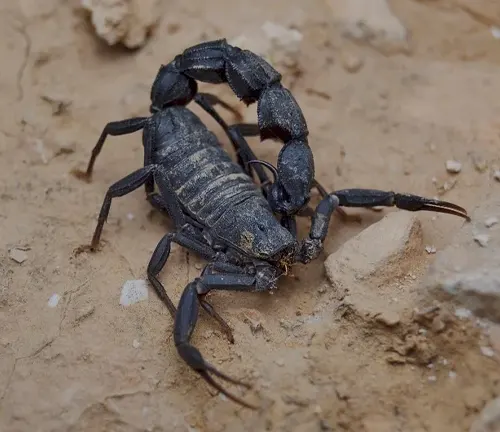
In terms of size, Androctonus scorpions vary in length, with adults typically ranging from 3 to 10 centimeters. Despite their relatively small size, these scorpions possess robust bodies and thick, muscular tails. Their size may vary slightly between different species and individuals within the same species, but they generally maintain a compact and well-adapted form suited to their arid environments.
Venomous Stinger
One of the most distinctive features of Androctonus scorpions is their venomous stinger, located at the tip of their tail. This stinger is equipped with a sharp, curved structure designed to inject venom into their prey or defend against potential threats. The venom of Androctonus scorpions contains a potent mixture of neurotoxins and enzymes, which varies in composition between species.
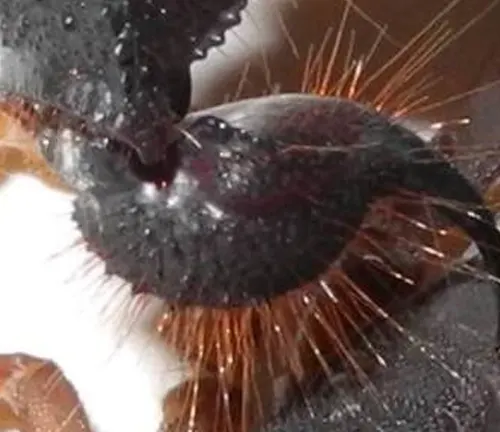
When threatened or provoked, Androctonus scorpions may use their venomous stinger to deliver a quick and precise strike, immobilizing their prey or deterring predators. The venom acts by disrupting the nervous system of the target, leading to paralysis and eventual death. While dangerous to their prey and potential threats, Androctonus venom can also pose significant risks to humans if a sting occurs.
Habitat and Distribution
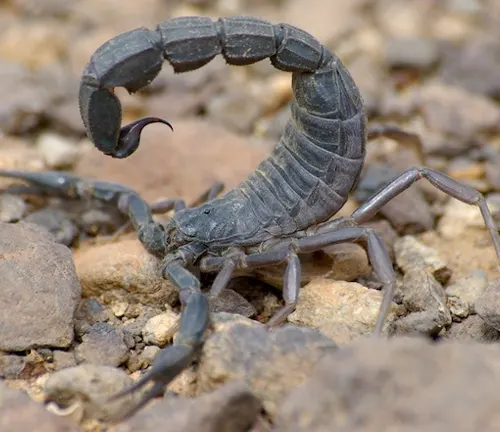

Androctonus scorpions inhabit arid regions characterized by dry climates, sparse vegetation, and rocky terrain. They are primarily found in deserts, scrublands, and arid grasslands across Africa, the Middle East, and parts of Asia. These scorpions are well-adapted to survive in environments with limited water sources and extreme temperatures.
Their distribution spans various countries, including Morocco, Algeria, Tunisia, Libya, Egypt, Saudi Arabia, Yemen, Iraq, Iran, and Pakistan, among others. Within these regions, Androctonus scorpions occupy diverse microhabitats, ranging from sandy dunes to rocky outcrops and dry riverbeds.
Androctonus species are proficient burrowers, excavating tunnels in the soil or seeking refuge under rocks and debris. These burrows provide shelter from the intense heat of the day and protection from predators. Their ability to thrive in harsh desert environments has allowed Androctonus scorpions to establish populations across a wide geographic range.
Behavior and Diet
Nocturnal Behavior
Androctonus scorpions are primarily nocturnal creatures, meaning they are most active during the night. This behavioral adaptation allows them to avoid the intense heat of the day, which is common in their arid desert habitats. By emerging at night, Androctonus scorpions can take advantage of cooler temperatures to hunt for prey and engage in other activities.
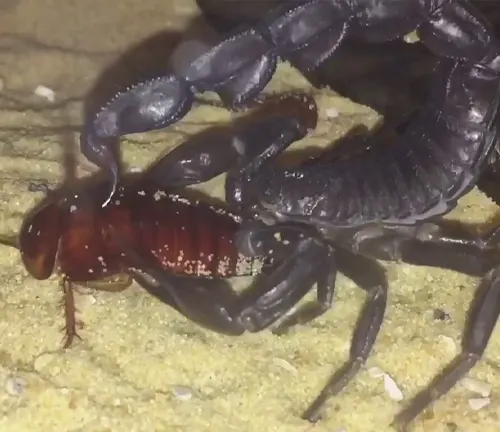
During the daytime, Androctonus scorpions typically seek shelter in burrows or beneath rocks to avoid exposure to the sun’s heat. These hiding spots provide protection from predators and help conserve moisture, as desert environments can be extremely dry. As the sun sets and temperatures drop, Androctonus scorpions emerge from their shelters to forage for food and engage in reproductive behaviors.
Prey Preferences
Androctonus scorpions are opportunistic predators with a diverse diet consisting mainly of small invertebrates. Their prey preferences may vary depending on factors such as species, habitat, and availability of food sources. Common prey items for Androctonus scorpions include insects, spiders, centipedes, and other arachnids.
These scorpions use a combination of stealth and ambush tactics to capture their prey. They rely on their keen sense of smell and vibration-sensitive hairs located on their bodies to detect the presence of nearby prey. Once a potential meal is located, Androctonus scorpions use their powerful pincers to grasp and immobilize their prey before delivering a venomous sting.
Their venomous stinger injects a potent cocktail of neurotoxins and enzymes into the prey, quickly incapacitating it and allowing the scorpion to consume its meal at leisure. Androctonus scorpions are skilled hunters capable of subduing prey larger than themselves, making them formidable predators in their desert ecosystems.
Importance in Ecosystem
Androctonus scorpions play a crucial role in maintaining ecological balance within their arid desert habitats. As efficient predators, they help regulate insect populations, thereby preventing overpopulation of certain species and contributing to overall ecosystem health.
By preying on a variety of small invertebrates such as insects, spiders, and other arachnids, Androctonus scorpions help control pest populations. This control of insect numbers can have cascading effects throughout the food web, preventing outbreaks of pests that can damage crops or disrupt ecosystems.
Additionally, Androctonus scorpions serve as a food source for various predators within their habitat. Birds, mammals, and other arthropods may prey on scorpions, contributing to the energy flow and nutrient cycling within the ecosystem. As such, Androctonus scorpions occupy an important niche as both predator and prey, forming vital links in the desert food web.
Moreover, their presence influences the behavior and distribution of other organisms within their ecosystem. The fear of encountering a venomous scorpion may influence the behavior of potential predators and prey, leading to adaptations and strategies for avoidance or defense.
Danger to Humans
Venom Composition
The venom of Androctonus scorpions contains a complex mixture of toxins designed to immobilize and subdue prey. In humans, a sting from these scorpions can induce symptoms ranging from localized pain and swelling to systemic effects such as cardiovascular and respiratory distress.
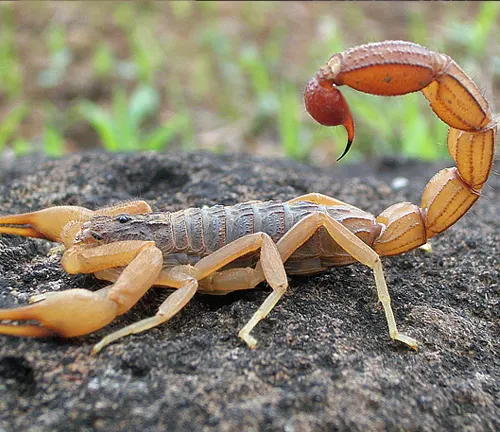
Treatment for Androctonus Sting
Immediate medical attention is crucial following an Androctonus sting. Treatment may involve administering antivenom, managing symptoms, and monitoring for complications such as anaphylaxis or secondary infections.
Conservation Status
The conservation status of fat-tailed scorpions, particularly species within the genus Androctonus, varies depending on factors such as habitat loss, human encroachment, and climate change. While specific assessments for individual species may vary, many fat-tailed scorpions face threats to their survival and are of conservation concern.
Habitat loss and degradation pose significant challenges to fat-tailed scorpions, particularly as human populations expand and urbanization encroaches upon their natural habitats. Conversion of natural landscapes for agriculture, infrastructure development, and other human activities can fragment habitats and disrupt critical ecological processes.
Climate change also presents a threat to fat-tailed scorpion populations, as rising temperatures and altered precipitation patterns impact desert ecosystems. These changes may affect the availability of suitable habitat, prey resources, and reproductive conditions for fat-tailed scorpions, potentially leading to declines in population numbers.
Additionally, direct human persecution and extermination efforts aimed at eliminating perceived threats pose risks to fat-tailed scorpion populations. Misconceptions and fears surrounding these creatures often result in indiscriminate killing, further exacerbating their conservation status.
Conservation efforts aimed at preserving fat-tailed scorpion populations and their habitats are essential for ensuring their long-term survival. Strategies may include habitat restoration, protected area designation, community education and outreach, and sustainable land management practices.
Research and Study
Scientific Interest
Androctonus scorpions are subjects of extensive scientific research due to their potent venom and potential applications in medicine. Scientists study their venom composition, behavior, and evolutionary adaptations to better understand their ecological roles and develop novel therapeutics.
Biomedical Applications
Compounds derived from Androctonus venom show promise in various biomedical applications, including pain management, cancer treatment, and neuroscience research. Understanding the mechanisms of venom action can lead to the development of targeted therapies with fewer side effects.
Human Interaction and Conflict
Encounters in Urban Areas: Human encroachment into Androctonus habitats increases the likelihood of encounters and conflicts. Urban development in desert regions often brings people into closer proximity with these scorpions, leading to accidental stings and safety concerns.
Mitigation Strategies: Educational campaigns, habitat conservation measures, and effective waste management practices can help mitigate human-scorpion conflicts. Public awareness about the importance of coexisting with native wildlife and adopting preventive measures can reduce the risk of encounters.
Myths and Misconceptions
Androctonus scorpions have been surrounded by myths and misconceptions, often portrayed as aggressive and deadly creatures. In reality, they are shy and elusive, preferring to avoid confrontation with humans unless provoked. Dispelling these myths is essential for promoting accurate understanding and conservation efforts.
Adaptations and Survival Mechanisms
Androctonus scorpions have evolved various adaptations to survive in harsh desert environments. Their ability to withstand extreme temperatures, conserve water, and efficiently locate prey demonstrates remarkable physiological and behavioral adaptations honed through millennia of evolution.
Reproduction and Life Cycle
Androctonus scorpions reproduce sexually, with males engaging in elaborate courtship rituals to attract mates. After mating, females give birth to live young, which cling to their mother’s back until they are ready to venture out on their own. This parental care enhances the survival chances of offspring in challenging desert environments.
Future Perspectives
The study of Androctonus scorpions continues to yield insights into venom evolution, ecological dynamics, and biomedical applications. Conservation efforts coupled with scientific research are essential for ensuring the survival of these fascinating creatures and harnessing the potential benefits of their venom.
Different Species
Androctonus amoreuxi
Also known as the lesser fat-tailed scorpion, this species is found in various regions across North Africa and the Middle East. It is characterized by its smaller size compared to other Androctonus species.
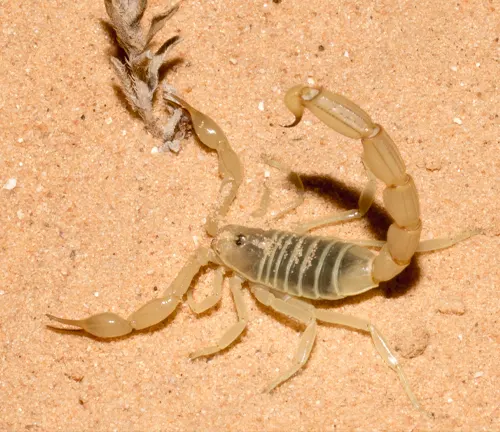

Androctonus australi
Commonly referred to as the North African fat-tailed scorpion, this species is native to North Africa, particularly Morocco, Algeria, and Tunisia. It is known for its potent venom and is considered a significant medical threat to humans in its range.
Androctonus bicolor
Found in the deserts of North Africa and the Arabian Peninsula, the bicolored fat-tailed scorpion exhibits distinct coloration patterns, with contrasting shades of brown or black on its body.
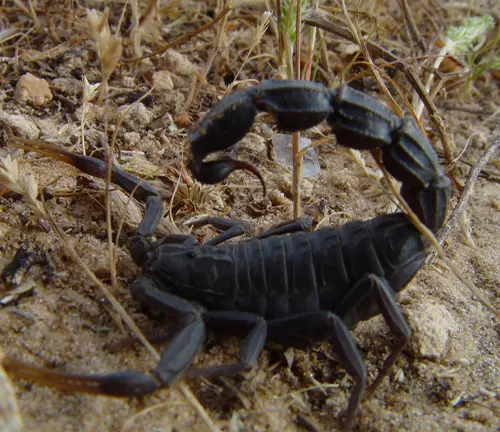
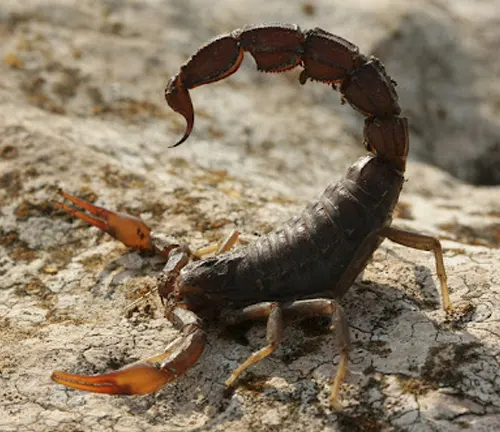
Androctonus crassicauda
Also known as the thick-tailed scorpion, this species is distributed throughout North Africa, the Middle East, and parts of Central Asia. It is recognized for its robust build and powerful venom.
Androctonus liouvillei
Native to North Africa, particularly Algeria, Androctonus liouvillei is characterized by its slender appearance and distinctive coloration. It is one of the smaller species within the genus Androctonus.
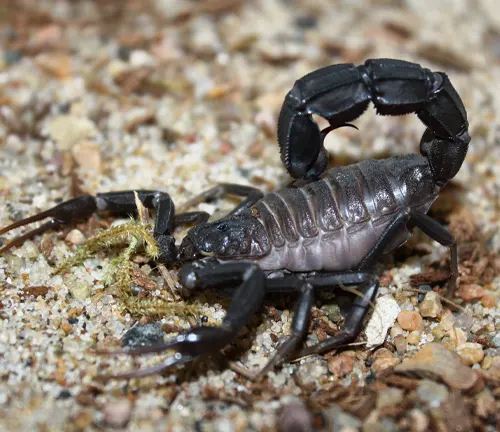
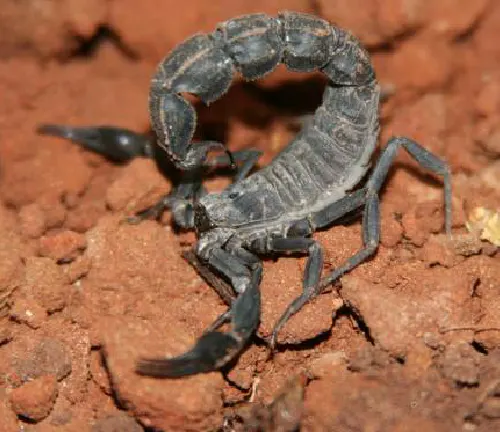
Androctonus mauretanicus
Endemic to Morocco and neighboring regions, the Moroccan fat-tailed scorpion is a large species known for its robust build and potent venom.
Frequently Asked Questions (FAQs)
- Are all Androctonus scorpions venomous?
Yes, all species within the genus Androctonus are venomous. They possess venom glands located in their tails, which they use for subduing prey and defending themselves against predators. - What should I do if I encounter an Androctonus scorpion in the wild?
If you encounter an Androctonus scorpion in the wild, it’s essential to remain calm and avoid provoking or disturbing it. Slowly back away from the scorpion and give it space to retreat. Do not attempt to handle the scorpion, as it may sting if threatened. - Can Androctonus venom be used for medical purposes?
Yes, compounds derived from Androctonus venom show promise in various biomedical applications. Scientists are studying the venom’s components for potential use in pain management, cancer treatment, and neuroscience research. - How do Androctonus scorpions defend themselves against predators?
Androctonus scorpions defend themselves using their venomous stinger and by adopting defensive postures to deter potential threats. They may also retreat into burrows or crevices to avoid confrontation. - What are the main threats to Androctonus populations in their natural habitats?
Androctonus scorpions face threats from habitat loss, climate change, and human encroachment into their natural habitats. Urban development, agricultural expansion, and pollution contribute to the degradation of their ecosystems. Conservation efforts are essential for preserving Androctonus populations and their habitats. - Are Androctonus scorpions aggressive towards humans?
- Androctonus scorpions are not typically aggressive towards humans and will usually avoid confrontation if given the opportunity to escape. However, they may sting if they feel threatened or cornered.
- Androctonus scorpions are not typically aggressive towards humans and will usually avoid confrontation if given the opportunity to escape. However, they may sting if they feel threatened or cornered.
- How dangerous is a sting from an Androctonus scorpion?
A sting from an Androctonus scorpion can be potentially life-threatening, particularly if the individual is allergic to the venom or if medical treatment is delayed. Symptoms may include severe pain, swelling, respiratory distress, and neurological complications. - What should I do if I’m stung by an Androctonus scorpion?
If stung by an Androctonus scorpion, seek immediate medical attention. Clean the wound with soap and water, apply a cold compress to reduce swelling, and keep the affected limb immobilized. Do not attempt to suck out the venom or apply traditional remedies, as these can worsen the situation. - How can I prevent Androctonus stings?
To prevent Androctonus stings, avoid reaching into dark, concealed areas where scorpions may be hiding. Wear protective clothing and footwear when walking in areas known to be inhabited by scorpions, especially at night. Use caution when handling objects or debris in outdoor environments. - Do Androctonus scorpions have any predators?
While adult Androctonus scorpions have few natural predators due to their venomous sting and defensive capabilities, they may be preyed upon by certain bird species, mammals, and other large arthropods. - Are Androctonus scorpions social creatures?
Androctonus scorpions are generally solitary creatures and do not exhibit social behaviors commonly seen in some other arachnid species. They prefer to live and hunt alone, only coming together during mating encounters.


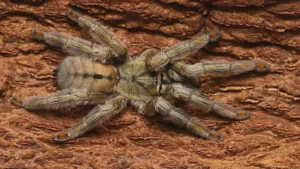


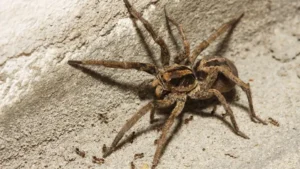

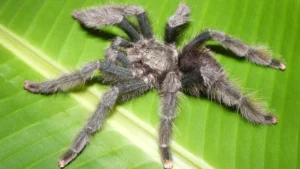


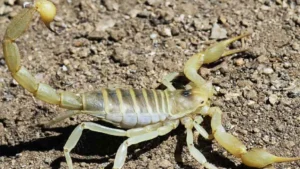



Leave your comment